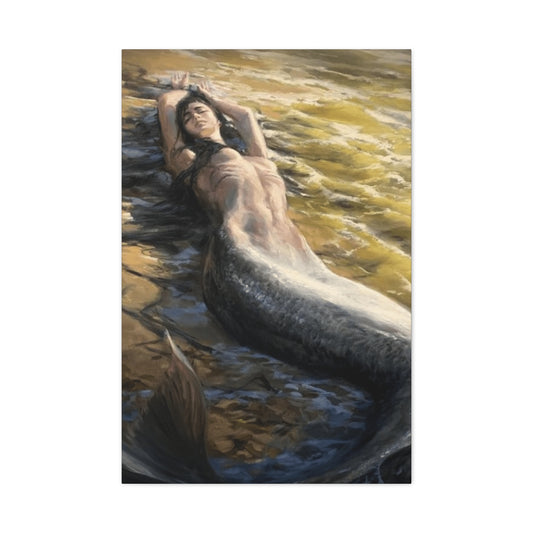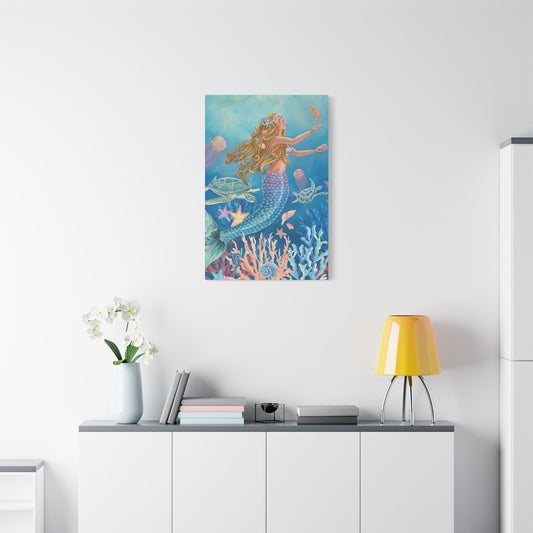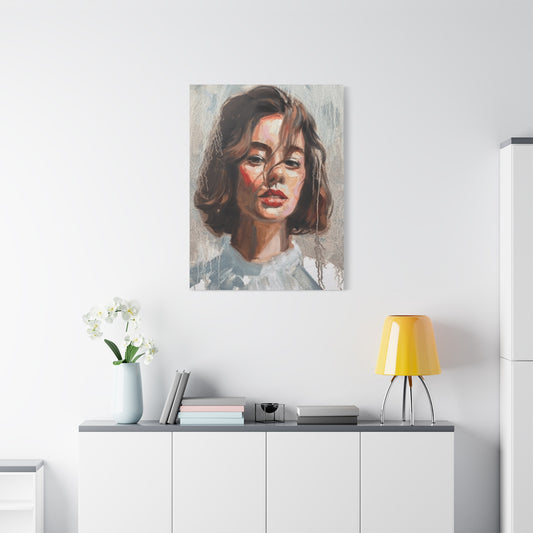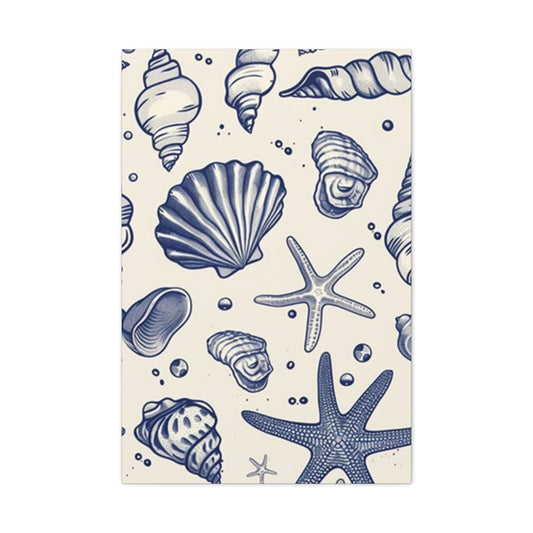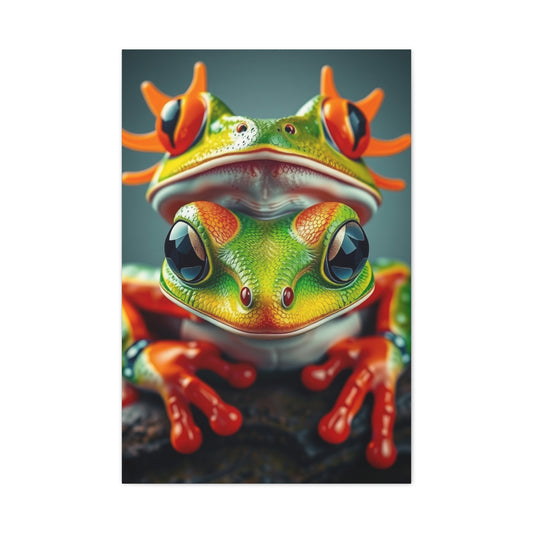In 2025, the bathroom is no longer just a space for daily hygiene; it has blossomed into a haven of peace, self-care, and interior sophistication. Through the thoughtful integration of spa-like wall art, even the smallest washroom can be elevated into a personal sanctuary that balances beauty, function, and emotional wellness. This transformation relies not on expensive overhauls but on deliberate curation—selecting calming visuals, choosing moisture-resistant materials, and positioning each piece to enhance atmosphere and flow.
Wall art is more than mere decoration; it is a narrative tool that sets the tone for your space. Nature-inspired prints, minimalist Zen pieces, and panoramic seascapes introduce a sense of stillness, echoing the calming essence of natural retreats. These elements aren’t just about visual pleasure—they’re an antidote to modern stress, inviting moments of tranquility amidst busy routines.
Choosing the right materials is equally crucial. In a moisture-prone environment like a bathroom, artwork must be durable and resilient. Waterproof canvases, sealed frames, and acrylic glass protect your investment while preserving elegance. Combined with strategic lighting, aromatic accents, and seasonal refreshes, your bathroom becomes a multisensory experience—a retreat that soothes mind and body alike.
This guide explores every nuance of spa-inspired bathroom wall décor, from aesthetic themes to sustainable choices, all while embedding search-optimized language to help homeowners discover transformative ideas. Whether you're outfitting a powder room or refreshing a master en suite, curated wall art offers a gateway to serenity and style. The goal is not just decoration, but elevation—crafting a lavatory space that doesn’t merely serve, but inspires. Let your bathroom become a story told in visuals, textures, and mood—a daily invitation to breathe, reflect, and reconnect.
Embrace Nature-Infused Aesthetics
The washroom of today is no longer a peripheral corner of the home—it has evolved into a sacred enclave of serenity and restoration. As homeowners continue to seek refuge from the sensory overload of modern life, nature-infused aesthetics in bathroom design have surged to the forefront. The reemergence of biophilic design invites the outdoors inside, bridging the visual and emotional gap between personal spaces and the natural world. When executed with intent, this organic influence can transform a clinical washroom into a deeply soothing, spa-inspired sanctuary.
One of the most impactful ways to implement this design ethos is through thoughtfully chosen wall art. Unlike transient accessories or disposable accents, wall décor establishes a permanent narrative on the vertical plane—one that sets the tone for everything else in the room. Begin with large-scale botanical compositions that channel the lush textures of the natural world. Think macro photography that captures the silvery sheen of eucalyptus leaves just after rainfall, or hyper-detailed renderings of magnolia petals mid-bloom. These visual statements do more than adorn walls—they instill calm, promote mindfulness, and subtly signal the washroom’s evolution from utility to ritual.
Botanical wall art flourishes when printed on matte, moisture-resistant substrates. Textural illustrations and giclée reproductions on stretched canvas infuse warmth and authenticity into even minimalist interiors. Their organic lines, subdued hues, and magnified detail echo the innate rhythm of the earth—an essential antidote to the sterile surfaces and sharp edges often found in contemporary bathrooms. Moreover, these soothing natural motifs are perfectly attuned to 2025’s modern lavatory décor movement, satisfying the growing demand for spaces that are both emotionally restorative and visually refined.
Coastal themes represent another pillar of this nature-centric aesthetic. Seascapes, when thoughtfully rendered, conjure the fluid grace of ocean tides and fog-drenched shorelines. A panoramic print of slate-blue waves meeting alabaster sand beneath a soft dove-gray sky expands spatial perception. In small powder rooms especially, this visual trickery elongates sightlines and simulates openness—ideal for tight floorplans that crave dimension without demolition. Equally compelling are high-resolution underwater scenes featuring coral gardens, or abstract watercolor interpretations of tidal movement that shift chromatically from deep indigo to sea-glass green. These pieces invite tranquility, grounding the viewer in elemental imagery that lingers long after the door closes behind them.
|
Related Catagories: |
For minimalists drawn to Zen-inspired tranquility, pared-down motifs evoke a sense of contemplative grace. Ink-brushed water ripples, stacked river stones, or solitary bamboo shoots bring quiet elegance to even the most utilitarian spaces. These elements, influenced by Japanese wabi-sabi principles, celebrate imperfection, impermanence, and asymmetry—concepts that align seamlessly with the notion of a personal wellness retreat. Such visuals function almost like meditative prompts, offering a moment of pause within the rhythms of daily grooming rituals.
Color plays a fundamental role in amplifying nature-themed bathroom wall art. In these sanctuaries, hues should soothe rather than stimulate. Favor soft sages, mossy greens, muted taupes, and overcast blues. These gentle tones harmonize with contemporary spa bathroom palettes while reinforcing the immersive qualities of botanical and aquatic imagery. Unlike more assertive color schemes, they allow the eye to rest, fostering a visual silence that balances the hard surfaces of tile, glass, and chrome.
Texture, too, is integral to the sensory depth of the space. Pairing art with natural materials such as reclaimed wood shelves, woven baskets, or linen curtains enhances the biophilic narrative. When macro florals hang beside rough-hewn stoneware or matte ceramic vessels, a rich interplay of tactile contrasts emerges. These layers not only deepen aesthetic cohesion but also meet the rising demand for curated interiors that blend rustic tactility with contemporary clarity.
Sustainability further amplifies the resonance of nature-infused bathroom décor. Opt for artworks created with eco-friendly inks on FSC-certified canvas. Choose frames made of bamboo or reclaimed wood, sealed with non-toxic varnishes. These thoughtful decisions aren’t just good for the planet—they imbue the space with a deeper story, one rooted in conscientious design. Consumers in 2025 are increasingly searching for ethical bathroom wall décor and sustainable home aesthetics, making these choices as SEO-savvy as they are environmentally sound.
Lighting is a critical, often overlooked element that affects how nature-themed wall art is perceived. Avoid sterile overhead fluorescents in favor of diffused ambient lighting. Frosted sconces, daylight-mimicking LEDs, or recessed uplighting can soften the appearance of artwork while ensuring its colors and details remain vivid. Strategically placed lighting also serves to heighten the sense of depth and dimension in pieces that emulate open skies or sprawling flora, reinforcing their immersive quality.
Aroma and visual design go hand in hand in completing the multisensory experience. A eucalyptus print accompanied by the gentle diffusion of its essential oil forms an atmospheric pairing that speaks to more than just sight. Integrating botanical artwork with scents like lavender, neroli, or white tea creates a subtle harmony between what’s seen and what’s felt. In doing so, the bathroom becomes not just a backdrop for routine but a holistic haven designed to rejuvenate.
Even in modestly sized bathrooms, nature-themed wall art can be transformative. Consider smaller-scale pieces grouped in a salon-style cluster above the toilet or beside a pedestal sink. Vary the frame styles—perhaps a blend of rattan, brushed brass, and reclaimed driftwood—to create visual rhythm. Alternatively, a diptych or triptych spanning the vertical expanse behind a freestanding tub can elongate the space while making a sculptural statement. These thoughtful arrangements not only humanize the environment but also meet emerging design interests around bathroom gallery walls and organic-themed powder room inspiration.
Ultimately, the power of nature-infused aesthetics lies in their ability to foster stillness. At a time when wellness has become central to home design, and when the bathroom serves as a primary site for self-reconnection, infusing the space with nature’s language is both poetic and pragmatic. Through emotive imagery, earthy textures, eco-conscious materials, and balanced composition, you don’t merely decorate—you craft an immersive, personal ecosystem that soothes the senses and enriches the everyday.
Elevate Mood and Space with Coastal and Botanical Fusion
While botanical themes bring grounded, leafy tranquility, pairing them with coastal elements invites an expansive, horizon-bending effect—particularly beneficial in small or windowless washrooms. Imagine a canvas depicting windswept reeds at the edge of a dune, transitioning smoothly into pale driftwood tones. This coastal-botanical fusion feels neither too tropical nor overly rustic; instead, it offers a nuanced palette that bridges land and sea.
The effect of such hybrid imagery is twofold: spatial expansion and emotional deceleration. Ocean elements, rendered with artistic restraint, recall the liminality of shoreline—neither here nor there, but somewhere in between. That ambiguity allows the mind to wander, opening mental space for clarity. Pair this visual serenity with complementary natural materials like honed travertine, sun-bleached oak, or stonewashed linen for a layered effect.
Soft oceanic tones—dove grey, mineral blue, seafoam—harmonize perfectly with botanical greens and florals. This chromatic cohesion creates a seamless design language across walls, fixtures, and textiles. It’s ideal for satisfying the rising trend of monochromatic serenity in bathroom interiors, all while remaining SEO-aligned with search terms such as relaxing coastal bathroom art and botanical ocean wall décor.
In this confluence of land and sea, the bathroom becomes a reflective chamber, echoing the rhythms of both growth and drift. It’s where morning clarity begins and nighttime exhale concludes—a space orchestrated by thoughtful artistry and quiet connection to the natural world.
Curate a Narrative with Seasonal Nature Art
To keep your nature-themed washroom evolving and emotionally resonant, consider adopting a seasonal rotation of art. Rather than remaining static year-round, let your décor adapt with the shifting cadence of nature. This approach not only sustains visual freshness but also aligns with the emotional tone of each season.
In spring, adorn the space with delicate blossom prints or bright green foliage that speaks to awakening and renewal. For summer, choose artworks that exude warmth—perhaps sun-dappled water scenes, blooming wildflowers, or citrus orchard studies. Autumn invites a palette of rust, sienna, and amber. Think mist-laden forests, falling leaves, or grain fields rippling in golden twilight. Winter calls for restraint and quietude—bare branches, snow-covered meadows, or abstracted frost patterns.
Each transition offers an opportunity to realign the emotional intent of the room. You’ll be continually re-engaging with your space and subtly enhancing its functionality as a wellness zone. Modular hanging systems and digital frames make these swaps easy, and keeping your wall art rotation aligned with the seasons reinforces key online queries around year-round bathroom styling and seasonal home updates.
Through the thoughtful interplay of image, scent, texture, and story, your bathroom becomes a curated escape—a place where nature isn’t merely reflected but embodied. This is design with resonance, rooted in intention and enriched by the steady pulse of the natural world.
Select Moisture-Resilient Wall Art Materials
Designing a bathroom that feels both elegant and enduring requires a deep understanding of its environment. Bathrooms are inherently volatile spaces for décor—prone to humidity, temperature fluctuations, and condensation accumulation. These factors pose significant challenges to traditional artwork, especially when prints are framed with untreated wood or mounted behind low-quality glazing. Without proper materials, beautiful art can quickly warp, mildew, fade, or delaminate in a steamy bathroom. That’s why selecting moisture-resilient wall art materials is crucial to achieving a lasting and visually cohesive design.
The foundation of resilient bathroom wall art lies in selecting the right framing. While wood brings warmth and organic appeal, not all types are created equal when exposed to humid conditions. Choose kiln-dried hardwoods like cedar or teak, which contain natural oils that resist mold and mildew. These woods, especially when sealed with water-based, low-VOC varnishes, provide a balance of sustainability and longevity. For an even more humidity-proof alternative, powder-coated aluminum frames offer exceptional stability. Their sleek profile fits seamlessly with contemporary spa-inspired aesthetics, and their corrosion resistance makes them ideal for both small en-suites and larger luxury bathrooms.
Bamboo frames—particularly those engineered from marine-grade bamboo—offer another eco-conscious choice. Not only is bamboo inherently resistant to moisture, but it also aligns with 2025’s prevailing emphasis on sustainable bathroom décor. When combined with botanical or Zen-themed wall art, bamboo contributes to a cohesive narrative that bridges style and substance.
Equally important is the substrate on which the art is printed. Traditional paper prints can be easily compromised in a humid environment. Instead, opt for materials like acrylic glass, which outperforms traditional glazing in high-moisture rooms. Acrylic is shatter-resistant, lightweight, and significantly less likely to fog or yellow over time. It also enhances color vibrancy, making it particularly suitable for nuanced pastel seascapes, detailed florals, and monochromatic abstracts.
For those drawn to metal wall art, aluminum panels printed using dye-sublimation methods provide extraordinary visual clarity and resilience. This process fuses ink directly into the metal surface, resulting in a print that is waterproof, UV-resistant, and impervious to steam damage. These pieces are particularly well-suited to ultra-modern bathrooms, where clean lines and bold colors take center stage. The reflective quality of metal prints adds luminosity and depth, especially when paired with diffused lighting or natural daylight from frosted windows.
Canvas lovers aren’t excluded from bathroom-friendly solutions. The key is in both the canvas and the stretcher bar materials. Giclée prints—known for their fine resolution and archival pigment quality—can be stretched over kiln-dried cedar or birch frames to ensure stability. These woods not only prevent bowing but also contain antimicrobial properties that minimize the risk of mold formation. To further safeguard the canvas, look for pieces sealed with museum-grade varnishes, which form a breathable barrier against moisture without altering the tactile texture of the print.
Integrate Aesthetics with Durability for a Lasting Impression
Creating a visually pleasing bathroom that doesn’t sacrifice durability is both an art and a science. Moisture-resilient materials let you decorate confidently, knowing your selections are built to withstand the environmental stresses unique to bathrooms. Incorporating wall art that harmonizes with the textures of stone, tile, and water elements enriches the sensory experience while reinforcing the spa-like serenity that so many homeowners now seek.
Materials like powder-coated metals, sealed wood, and high-definition acrylic combine architectural strength with artistic beauty. By investing in quality craftsmanship and sustainable substrates, you subtly elevate the room’s ambiance and align with eco-conscious interior movements. This blend of aesthetic ambition and pragmatic design speaks directly to modern expectations around sustainable luxury, minimal maintenance, and enduring style.
As wall art continues to gain recognition as a central element of washroom décor, the choices you make—from frame to mounting technique—tell a story about your relationship with space, comfort, and nature. They communicate intention and style, whispering tranquility to guests and residents alike. In short, these material decisions are the backbone of timeless bathroom design.
Make Resilient Design Part of Your Bathroom’s Identity
Bathrooms, once considered purely functional, are now personal sanctuaries—a reflection of daily rituals and interior ethos. Incorporating moisture-resistant wall art isn’t just a practical necessity; it is an opportunity to infuse these spaces with sophistication, tranquility, and story.
Your bathroom walls deserve art that endures—a visual companion to your moments of solitude and renewal. Choose materials that support this intent, from kiln-dried frames and UV-resistant surfaces to environmentally responsible print processes. Opt for tactile contrasts, reflective finishes, and intentional placement. Every element you introduce should offer something more than visual pleasure—it should foster well-being, evoke quiet wonder, and anchor your sanctuary with integrity.
In 2025, the modern bathroom is no longer a neglected niche. It is an experiential zone where thoughtful design meets tactile intelligence. When your wall art reflects this, you create more than a beautiful space—you curate a restorative experience that stands resilient against time, trend, and temperature.
Achieve Harmonious Placement and Composition
In the world of interior design, few elements wield as much silent influence as the placement and arrangement of wall art. It’s an architectural choreography—unseen yet deeply felt. In a bathroom setting, where spatial constraints and surface textures dominate, achieving compositional harmony through strategic artwork positioning becomes an art form in itself. Well-placed wall décor doesn’t just beautify; it shapes perception, anchors ambiance, and enhances emotional resonance.
Bathrooms, by their nature, are intimate spaces. Unlike open-plan living rooms or sprawling hallways, they present abbreviated sightlines and immediate focal points. This intimacy gives wall art the opportunity to shine with greater immediacy. In small powder rooms, guest lavatories, or compact en suites, even a single canvas can redefine the room’s entire visual rhythm. That’s why positioning is paramount—it determines not only how artwork is seen, but how it is experienced.
Begin by identifying the bathroom’s natural sightlines. Stand at the entrance and observe where the eye is instinctively drawn. Often, it’s toward the mirror, above the vanity, or across the back wall. These are the spaces where art makes its most powerful introductions. Hanging a seascape, botanical print, or abstract piece in these locations ensures maximum visibility and emotional impact. If your bathroom layout includes a free wall directly opposite the door, use it to present a large-scale statement piece—this instantly elevates the perceived depth and character of the room.
Mounting height is another critical element in establishing visual balance. Art should ideally be hung so that its center sits approximately 57 to 60 inches from the floor—aligned with the average viewer’s gaze. This gallery-standard height works well even in residential bathrooms and encourages seamless eye movement. In bathrooms with a dominant vanity or shelf, consider the vertical span available and aim to maintain an 8 to 10-inch buffer above those surfaces to prevent water exposure while preserving proportional elegance.
Where bathrooms include tall ceilings or unusual wall configurations, vertical triptychs or elongated panels become especially effective. These compositions draw the eye upward, elongating the room’s dimensions and counterbalancing horizontal fixtures like countertops or towel bars. In smaller spaces, such as half-baths, asymmetrical trios or mini gallery clusters add layered visual interest without overpowering the space. Mixing frame sizes, textures, and subjects—such as a monochrome photograph next to a soft pastel floral—introduces contrast while preserving cohesion.
Salon-style arrangements work particularly well when space is narrow but wall real estate is ample. Group small- to medium-sized artworks in odd numbers and stagger their heights subtly to evoke a relaxed yet curated effect. Ensure a consistent gap between each piece—ideally between two and three inches—to prevent visual congestion and maintain rhythm. Align the outer edges rather than the centers to create a more dynamic silhouette that feels modern yet intimate.
Use Spatial Awareness to Your Advantage
Understanding the volume and geometry of your bathroom allows for smarter wall art decisions. In narrow vertical spaces, such as between windows or above freestanding tubs, select elongated works that mimic the upward thrust of the architecture. Where the walls are wide and low, panoramic prints or diptychs stabilize the composition and encourage lateral eye movement.
Recessed niches, alcoves, or ledges offer opportunities for semi-permanent display zones. These can house framed miniatures or mounted sculptural pieces that add dimension without cluttering usable space. If the room includes overhead shelves or cabinetry, leave breathing space beneath the art—about four to six inches—to avoid visual crowding. In tiled areas, opt for floating frames that detach the piece from the grout lines, allowing it to ‘float’ in place and shine against uniform backdrops.
Play with placement in unexpected zones—such as low walls near freestanding vanities, adjacent to bathtubs, or behind translucent shower glass. Water-resistant pieces mounted in these areas surprise and delight, breaking the conventional expectation of art only appearing at eye level. These installations are particularly effective in large spa-style bathrooms, where every surface can participate in the aesthetic symphony.
Strategically staggered works can guide movement through larger washrooms. When arranged with intention, a trail of prints across a hallway-length wall or down a vanity corridor leads the eye fluidly, encouraging guests to take in the space gradually. This progressive arrangement suits luxury homes, wellness studios, or designer powder rooms where immersion is the objective.
|
Related Catagories: |
Make Placement a Reflection of Personal Ritual
Bathroom wall art is more than a decorative gesture—it’s an extension of the user’s daily rituals. Whether it’s a calming moment of reflection before bedtime or a lively jolt of inspiration during a morning routine, your chosen artwork should align with the emotional texture of the room. Place calming visuals, such as misty mountains or botanical still lifes, near spaces used for winding down. Position energetic or colorful abstract pieces where natural light is strongest to kickstart morning clarity.
Rotate art seasonally or by mood. A subdued monochrome drawing might feel right during winter, while a radiant coastal panorama could breathe vitality into summer mornings. The adaptability of wall placement—especially when achieved with modular mounting hardware or minimalist hanging rails—makes this evolution seamless. This fluidity supports an ongoing relationship between the user and the space.
In the end, thoughtful placement is the soul of bathroom wall décor. It defines how art interacts with architecture, light, and emotion. From symmetrical pairings to freeform clusters, from small powder rooms to expansive spa chambers, placement transforms static imagery into living design. Let your bathroom walls tell a story not just of taste, but of presence, intention, and personal resonance.
Illuminate Artwork with Intentional Lighting
Lighting, often overlooked in bathroom design, serves as the unseen architect of ambiance. It’s the element that renders shadows poetic, colors vivid, and textures tactile. In the context of bathroom wall art, lighting transcends practicality—it transforms the visual landscape, guiding perception and establishing mood. When integrated with thoughtfulness, lighting doesn't just showcase your artwork; it magnifies its emotional and aesthetic resonance, transforming a humble lavatory into a bespoke sanctuary of sensory delight.
To truly accentuate the visual nuances of wall art in a moisture-prone space like a bathroom, it’s essential to start with the fundamentals of lighting types and placement. Ambient, task, and accent lighting each serve unique roles, and when harmonized, they create a layered, gallery-like effect that enhances not only the artwork but the entire room’s character. Ambient lighting forms the general illumination—typically from ceiling fixtures or soft-glow recessed lights. Accent lighting, however, is what introduces drama and depth, offering precise, directional focus that draws the eye directly to your selected artwork.
Sconces are the cornerstone of intentional bathroom lighting. Installed on either side of a mirror or artwork, these fixtures cast diffused, lateral light that avoids harsh overhead shadows. Choose fixtures with frosted or opal-glass shades to produce an evenly spread glow, one that softens the sharpness of ceramic tiles and prevents glare on glass-encased prints. For a contemporary touch, integrated LED sconces with dimming capabilities allow for lighting modulation based on time of day or personal preference—a detail appreciated in spa-style interiors where mood control is paramount.
Recessed LED strips offer a sophisticated, minimalist solution for those drawn to futuristic aesthetics. When installed around the inner edges of a floating frame, they produce a subtle halo effect, ideal for accentuating ethereal abstracts, geometric ink sketches, or celestial compositions. This backlit technique provides indirect light that’s gentle on the eyes yet theatrically engaging—particularly in low-light evening settings where the bathroom becomes a private retreat rather than a utilitarian zone.
It’s important to choose the right light temperature and quality. LEDs in the 2700K to 3000K range mimic the warm tones of afternoon sunlight and are especially flattering to organic hues found in nature-themed wall art. Cool lighting above 4000K may work well in hyper-modern bathrooms with metallic finishes, but it can render skin tones unappealing and diminish the softness of canvas textures. For maximum color fidelity, prioritize bulbs with a Color Rendering Index (CRI) of 90 or above. High CRI ratings ensure that the blush of petals, the haze of a foggy seascape, or the grayscale intricacies of a monochrome abstract are experienced exactly as the artist intended.
Daylight also plays a key role in art presentation. If your bathroom includes frosted, clerestory, or transom windows, position your artwork to interact with the natural illumination. Morning light, with its cool bluish tint, can invigorate pieces featuring oceanic or botanical themes. Midday light enhances saturation, giving floral or geometric works a vivacious punch. Filtered window films or diaphanous curtains can control the intensity of this light, protecting sensitive materials while still celebrating the softness of natural rays.
Beyond bulb selection and fixture placement lies the artistry of visual orchestration. The goal is to direct attention subtly without overpowering the art or the viewer. Track lighting with adjustable heads, for instance, allows for precise targeting. Position these to avoid glare while ensuring each beam lands at a 30-degree angle—this reduces reflection and shadowing, especially on glossy surfaces. For larger compositions or gallery walls, stagger multiple lights to create consistent illumination across all elements, giving every piece its moment without competition.
Creative layering is another key to success. Combine ceiling downlights with focused accent fixtures to create lighting zones that change dynamically as one moves through the space. A narrow spotlight above a monochrome sketch beside the shower, for example, contrasts beautifully with a softly backlit canvas over the tub. This interplay of brightness and shadow carves out visual niches and imbues the room with intimacy.
Smart lighting systems are becoming increasingly prevalent in upscale and technologically advanced bathroom interiors. These systems allow users to pre-set lighting moods—morning invigorate, evening unwind, or art gallery showcase—at the touch of a button or voice command. These innovations pair well with digital art frames or moisture-resistant screens, allowing for lighting cues that shift in response to displayed imagery. A pastel abstract can be matched with a warm hue, while a cosmic digital animation might glow under cooler, bluish light for nocturnal serenity.
Energy efficiency also matters, especially in a room that may be occupied intermittently yet regularly. Opt for motion-activated LED lighting or dimmer-integrated setups that reduce consumption without sacrificing ambiance. Choosing energy-conscious solutions aligns with sustainability goals while enhancing long-term cost-efficiency—appealing to homeowners searching for green bathroom design options that integrate luxury and conscience.
The tactile relationship between light and material should not be neglected. Glossy frames, acrylic-mounted prints, or metallic canvases interact with light differently than their matte, linen, or wood counterparts. For artworks with high reflectivity, diffuse lighting is essential to minimize visual noise. Conversely, textured or layered artworks benefit from directional lighting that reveals their depth. Knowing how your chosen materials respond to illumination allows for better fixture placement and more dynamic viewing experiences.
Whether your bathroom is a compact urban cloakroom or a sprawling master suite spa, its lighting should perform like a well-rehearsed stage manager—subtle, responsive, and precise. It should anticipate mood shifts, enhance personal rituals, and offer your artwork the illumination it deserves. By blending technical precision with aesthetic intent, you elevate your wall décor from background accessory to the heart of the room’s identity.
Design a Mood with Light and Art Synergy
Lighting doesn’t just illuminate—it communicates. It sets the emotional tempo of a space, and when paired thoughtfully with wall art, it transforms your bathroom into a sensory narrative. A glowing canvas of misty forest pines becomes a window into nature when framed with amber-tinted LEDs. An abstract monochrome drawing feels contemplative under crisp white light but becomes sensual under golden twilight tones.
Consider how color, texture, and subject of each artwork inform your lighting strategy. A seascape may benefit from upward-facing floor lights that replicate the rising sun. Conversely, a muted ink print may become more evocative under a single focused spotlight that mimics the hush of moonlight. Even modest installations—a pair of sconces above a miniature gallery wall—can lend visual rhythm and tranquility to tight powder rooms.
In shared or guest bathrooms, programmable lighting adds flexibility. Morning settings may emphasize brightness and clarity, while evening modes dim to embrace softness and subtlety. This changeable mood supports different daily routines and guests' expectations while continually reframing the wall art in fresh and engaging ways.
Let Light Sculpt Your Bathroom’s Identity
Your bathroom’s personality is crafted not just by color, material, or layout—but by light. It is the sculptor of shadows, the amplifier of color, and the shaper of focus. When tailored to highlight the textures and tones of your chosen wall art, lighting becomes an architectural layer all its own—one that animates the space and gives it breath.
Make your lighting choices not as afterthoughts, but as integral parts of your design vision. Choose fixtures that harmonize with your wall art’s theme, bulbs that uphold chromatic integrity, and placements that reward the viewer from every angle. Incorporate daylight where possible, and supplement with intelligent, responsive artificial lighting where necessary.
In 2025’s design ethos, bathrooms are sanctuaries, not service rooms. They are spaces for recalibration, reflection, and aesthetic indulgence. With intentional lighting, your wall art is no longer just décor—it’s a visual companion in your daily rituals, elegantly illuminated and meaningfully positioned within a space that finally sees the spotlight it deserves.
Curate a Multisensory Sanctuary with Scent and Sound
True sanctuary design transcends the visual. In 2025, the trend leans toward immersive environments that engage multiple senses. Harmonizing sight with scent and sound not only enriches user experience but also positions your bathroom as a holistic retreat.
Pair your wall art’s theme with complimentary aromatics. A seascape pairs beautifully with sea-salt or driftwood-scented diffusers, while eucalyptus prints sing alongside lemongrass or mint essential oils. Diffusers made of ceramic or stone further accentuate the room’s tactile narrative.
On the auditory front, install a waterproof Bluetooth speaker that murmurs calming soundscapes—rainfall, soft jazz, or forest birdsong. These gentle acoustics round out the sensory ballet, amplifying relaxation.
This approach echoes search behavior tied to calming bathroom ideas, sensory spa bathroom, and home aromatherapy spa tips—without compromising your design’s elegance.
Rotate Art Seasonally to Keep the Ambiance Alive
Seasonal rotation infuses freshness into your washroom and aligns the space with nature’s ever-changing rhythm. It allows homeowners to rejuvenate their visual narrative without undergoing a major renovation.
In spring, adorn the walls with delicate cherry blossoms or pale green ferns. Come summer, switch to nautical sailboat prints or radiant sunflower portraits. As autumn settles in, opt for golden forest landscapes or amber-hued abstractions. Winter invites crisp snowscapes, minimalist ice crystals, or grayscale city rooftops glazed in frost.
Store unused pieces in acid-free portfolios and keep them in a climate-stable cupboard. Modular mounting systems—like magnetic rails or hidden cleats—facilitate seamless swaps, making it easy to keep up with evolving moods and seasons.
This fluid design strategy strengthens visibility for searches related to seasonal bathroom décor refresh, rotating wall art ideas, and transitional home aesthetics.
Choose Ethical and Sustainable Art Solutions
Eco-conscious consumers are reshaping the décor industry, demanding transparency, responsibility, and artistry. Your bathroom wall décor should embody the same ethical values you bring to other aspects of your lifestyle.
Source your art from creators who utilize recycled, biodegradable, or upcycled materials. For instance, botanical illustrations reimagined from vintage encyclopedias lend charm and conscience. Seek out prints made using soy-based inks and water-soluble varnishes on FSC-certified paper.
Support local artisans or emerging illustrators whose work reflects both craft and community. Their unique pieces often carry deeper stories and imbue the room with cultural richness that mass-produced art can’t offer.
This mindful approach speaks to searchers exploring terms like eco-friendly bathroom wall art, sustainable bathroom design, and ethical interior décor ideas.
Preserve Art Through Proper Maintenance
Your curated oasis deserves safeguarding. Routine care ensures your artwork continues to inspire and soothe for years to come.
Wipe acrylic or glass surfaces gently using a microfiber cloth dampened with distilled water. Avoid abrasive or ammonia-based cleaners, which can fog protective glazing. For canvases, use a soft, dry brush to remove dust without disturbing pigment.
Install an efficient exhaust fan or crack a transom window during hot showers to maintain indoor humidity below 60 percent. This prevents mold and mildew from forming behind frames or canvas edges.
Secure hanging hardware with moisture-resistant screws and anchor plates, especially for heavier pieces. For digital art displays, ensure a waterproof IP rating (65 or higher) to prevent damage in splash zones.
These techniques naturally serve readers seeking advice around art care in humid environments and bathroom wall art preservation tips.
Final Thoughts: Crafting a Lavatory of Intention and Beauty
The modern bathroom has transcended its utilitarian roots. In 2025, it emerges as a curated retreat—an enclave where introspection, elegance, and self-care converge. Every element, from the scent in the air to the texture beneath your toes, contributes to an ecosystem of calm.
Wall art plays a pivotal role in shaping this environment. It anchors the space visually, personalizes the experience, and sets the emotional tone. By selecting moisture-proof materials, positioning with purpose, integrating lighting and aroma, and rotating pieces with the seasons, you design not just a bathroom—but a sanctuary.
Whether you're drawn to the minimalist allure of Zen ink strokes or the botanical splendor of macro florals, your wall art should echo your inner rhythm. It should quiet the chaos of the world, even if only for the time it takes to wash your hands.













